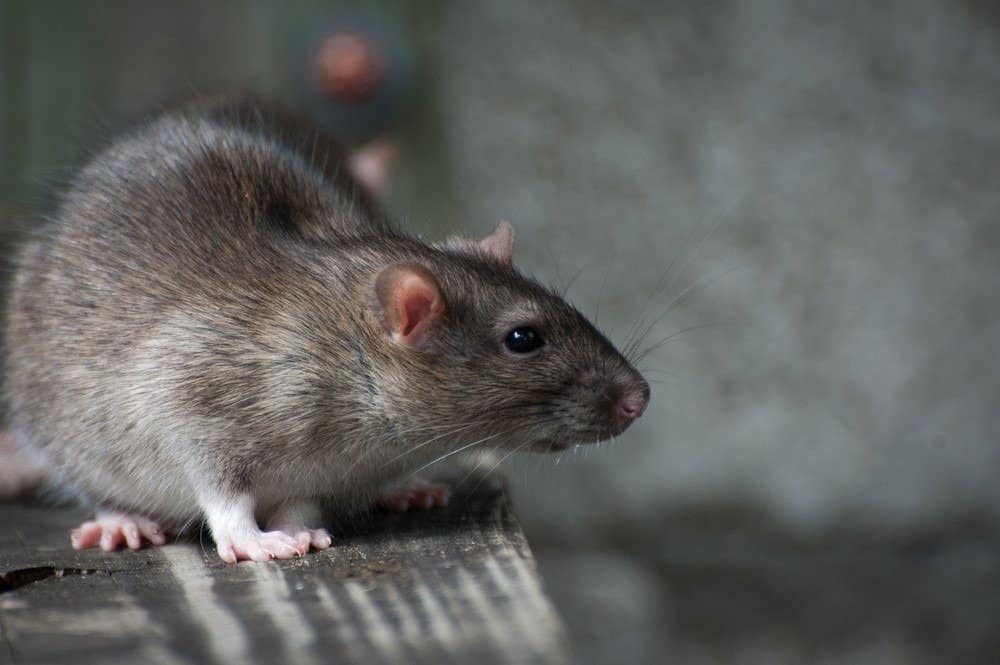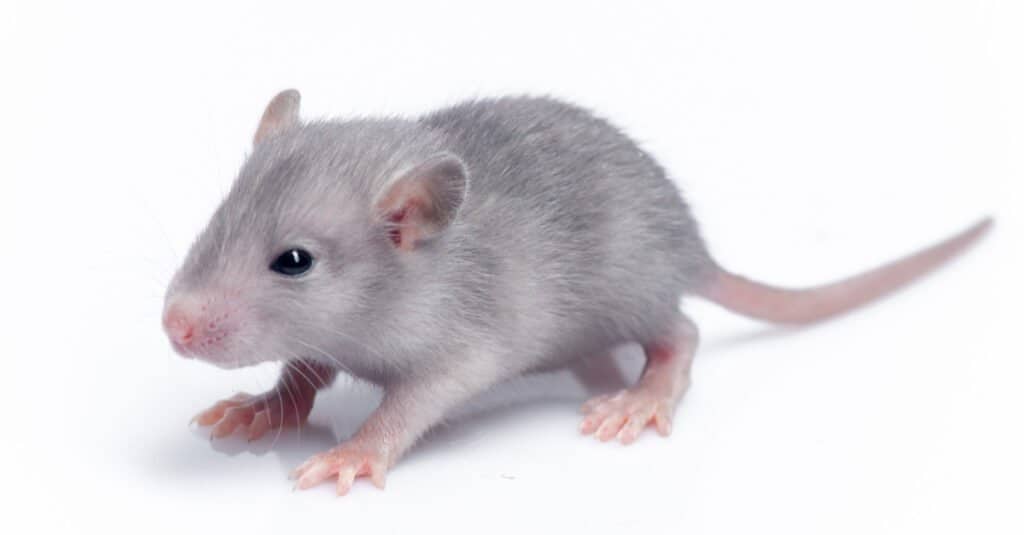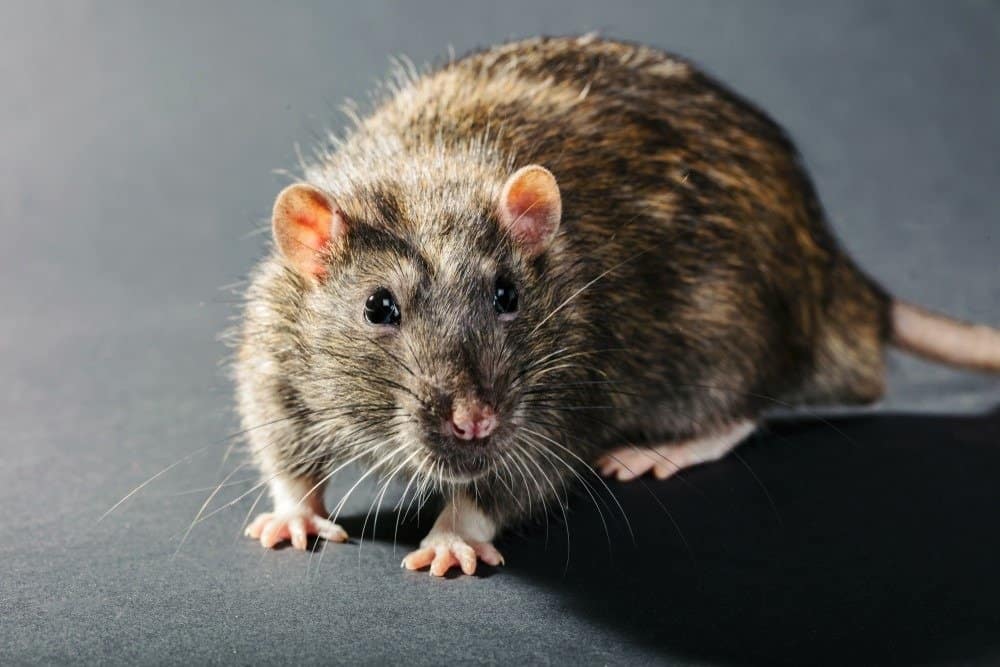Rats are furry, long-tailed creatures with an ever-present appetite to match their ever-growing teeth. They can be found almost anywhere globally, particularly in places inhabited by human beings. If people live in an area, there are most likely rats, especially black rats. They are medium-sized rodents – bigger than mice but smaller than beavers. There’s much more to them than their dewy eyes and littering habits. In this article, we’ll answer how big rats get and talk about the average sizes of baby and adult rats. We’ll also learn how long it takes a rat to get to its full size.
Background on Rats
Rats belong to the order Rodentia and share their whiskered looks with several other rodents, including mice, squirrels, hamsters, the marsupial, even gerbils. Rat tails are one of the things that mark the differences between rats and mice – they are hairless and scaly. Rats also have black eyes, two big ears, and long whiskers. Their coats are in shades of black, brown, gray, or white. A group of rats is called a mischief – rightly so.
There are about sixty known rat species with different colors, diets, habitats, and sizes. The two major species (in the United States) are the brown rat and the black rat. These species have been domesticated and can serve as pets in homes. The brown rat is also known as the Norway rat (or the common rat), while black rats are often called roof rats (or house rats).
Do All Rats Get Big?

Male rats are generally larger than female rats.
©Heiko Kiera/Shutterstock.com
Brown rats are typically 16 inches in total length. They are heavier than black rats, weighing between 0.5 to 1 pound. Black rats measure between 13 to 15 inches and weigh around 0.3 and 0.6 pounds.
Many factors may determine how big a rat gets, like the age of a rat or its gender. Adult rats are typically larger than baby rats. Also, most male rats (buck) are heavier than females (doe). Overall, a rat’s species will determine how big it can get.
For example, Osgood’s Vietnamese rat is the smallest rat species and is typically between 5 to 7 inches long. On the other hand, Sumatran Bamboo rats are the biggest rat species globally, with a length of 20 inches. So, it’s normal to expect a bamboo rat that hasn’t reached its standard size to grow bigger. On the other hand, rats who have smaller frames by nature may not exceed their typical body size or weight.
How Big Do Baby Rats Get?

Kittens are usually 2 to 4 inches long.
©Volodymyr Goinyk/Shutterstock.com
Like most rodents, rats give birth to their young ones directly. The gestation in females lasts between 21 to 23 days, after which baby rats are born. These babies, called pups or kittens, are usually between 2 and 4 inches long and weigh between 5 and 8 grams.
A litter of rat kittens typically has 6-8 rat babies. These babies are usually born deaf and blind and without fur. However, by the time they are two to three days old, their ear canals will begin to open up. At about 7 days, their eyes will open up, and fur would start to surface in 14-day olds. Then, they will start to add on more weight and grow bigger and move on from milk to solid food.
How Big Are Adult Rats?

Rats can grow to be 20 inches long and weigh between 0.55 and 1.1 pounds.
©Oleksandr Lysenko/Shutterstock.com
Adult rats are between 9 and 11 inches with tails as long as 7 to 9 inches. Male adults weigh between 0.66 and 1.1 pounds (300 and 500 grams), while female adults weigh between 0.55 and 0.66 pounds (250 and 300 grams).
Adult rats may weigh more or less depending on where they live. It is known that domesticated rats have more access to nutrition and may grow robust from a lack of energetic activities. On the other hand, wild rats have to scour for food and live on what they can find. As a result, they are often leaner and don’t live as long as housed rats.
How Long Does It Take a Rat To Grow To Its Full Size?
The average life expectancy for rats is between 12 months and 3 years. Black rats are known to live for 1 year, while brown rats can survive for more than two years. Although the odds are much better if the rats are domesticated rather than out in the wild.
Typically, pups are weaned and left to fend for themselves at three weeks. For most rodents, including rats, sexual maturity begins at five weeks. The females are often ready to start mating and reproducing between their fifth and eighth week. The males are slower as maturity begins in the 10th to 12th week. Gestation lasts between 21- 23 days, and the females can conceive within 48 hours of delivering pups.
It’s essential to distinguish between sexual maturity and growth in size. Most female rats become fully grown at 7 months, even though they may have birthed litters before then. Male rats may stop growing at 8 to 9 months. If rats continue to add on weight past these ages, it could indicate an illness or overeating.
Are Rats Good Pets?
Rats are good pets. However, not all species of rats can serve as pets, and here is where fancy rats come in. Fancy rats are common rats such as brown or black rats who have been domesticated and bred as pets. In fact, there are slight differences in the physical features of pet rats and wild rats.
Pet rats are friendlier and have a more robust appearance since they get fed directly by humans. They also have more diverse coat colors. You can find them in pale gray, powder blue, beige, or even multiple tones. Fancy rats make for good company and have been known to learn tricks to entertain their owners!
How To Help Your Rat Grow To Its Maximum Size
Pet rats have a higher life expectancy than wild rats because they receive more attention and care. For your pet rat to grow correctly, it needs to be healthy.
Rats are easily susceptible to tumors and respiratory distress. So, it helps to pay attention to your rat’s needs – ensure it stays on a healthy diet, and check in with the vet when you notice anything unusual. It’s also essential to ensure that female rats are separated from males in the weeks following delivery. They need time to wean off the pups before new pregnancies occur.
Up Next
The photo featured at the top of this post is © iStock.com/M. Leonard Photography
Thank you for reading! Have some feedback for us? Contact the AZ Animals editorial team.







